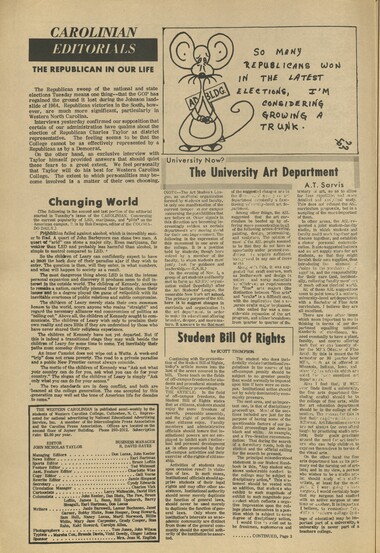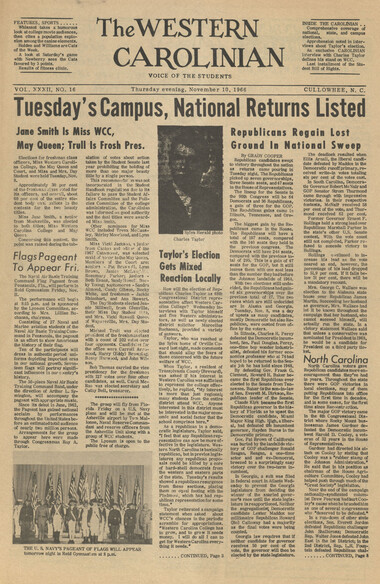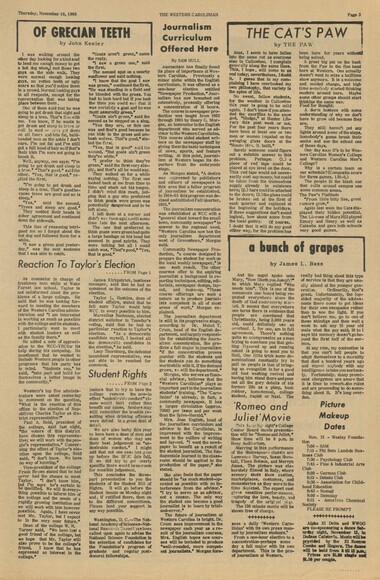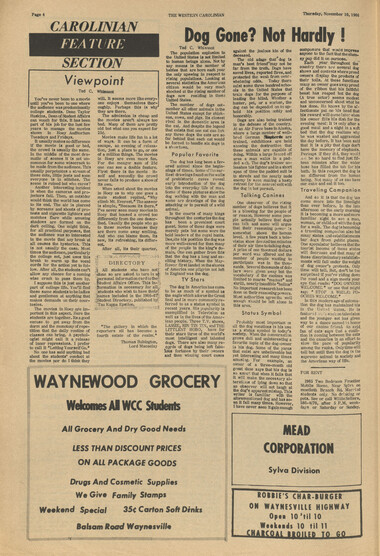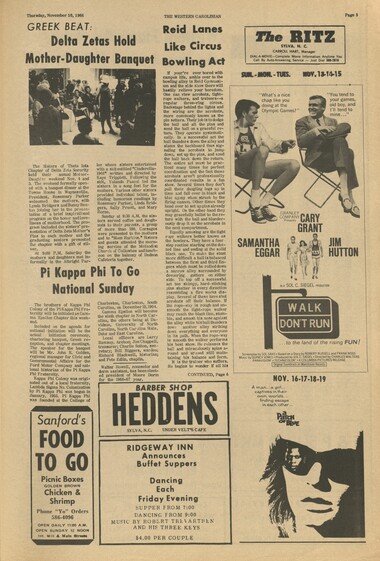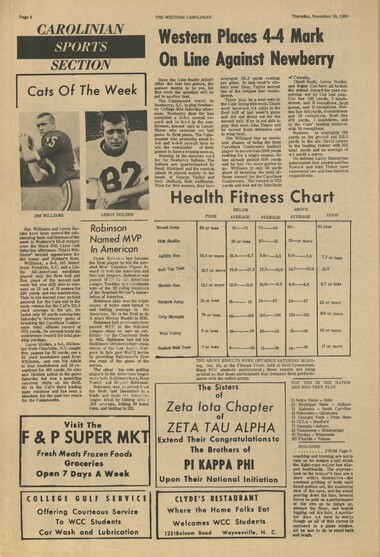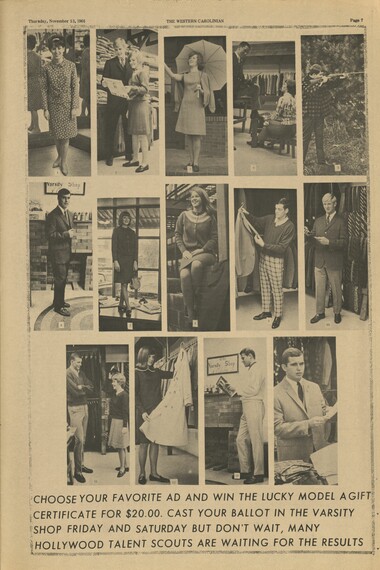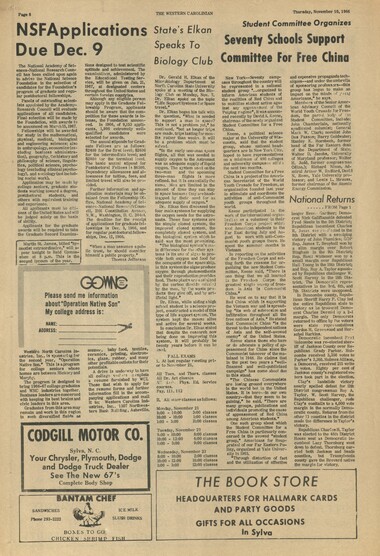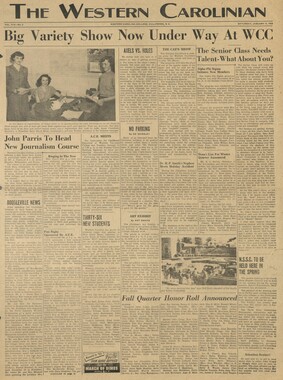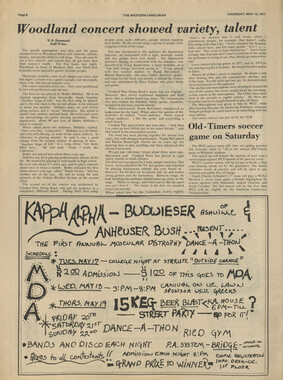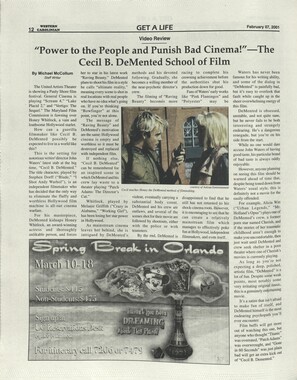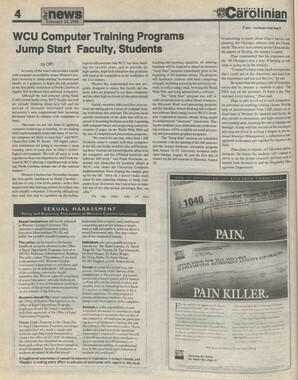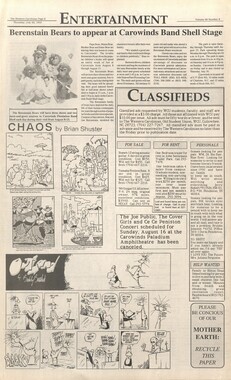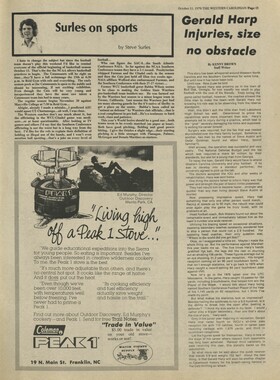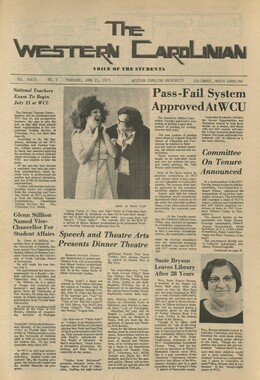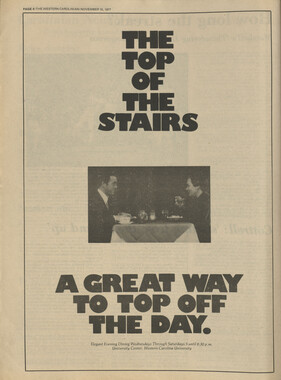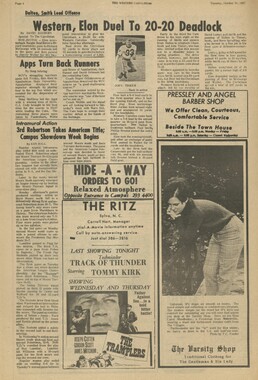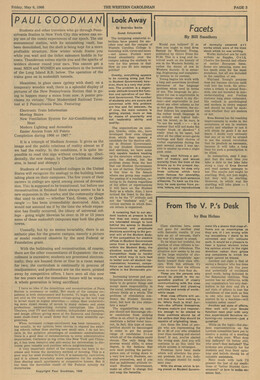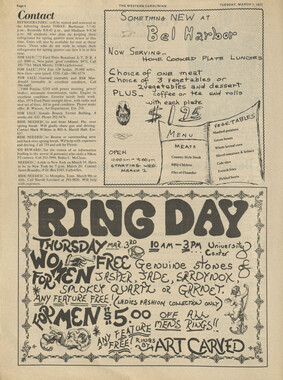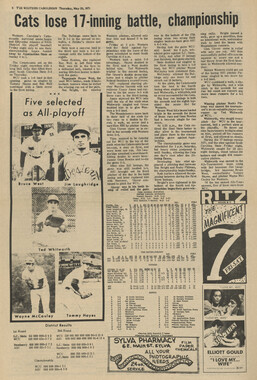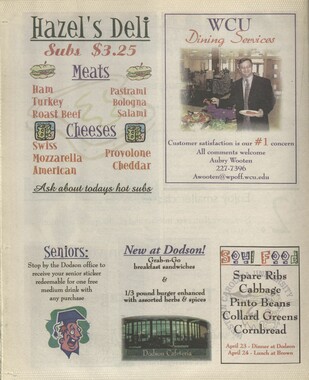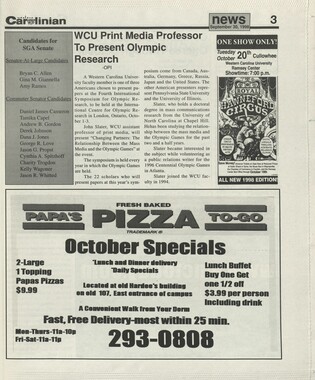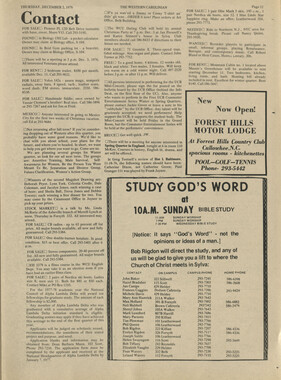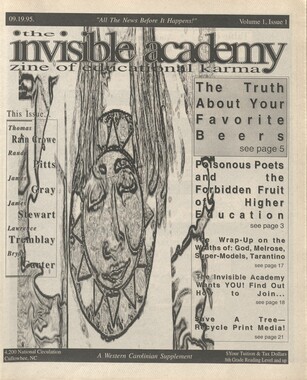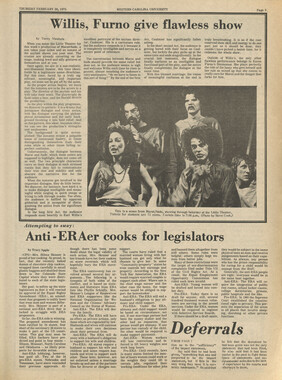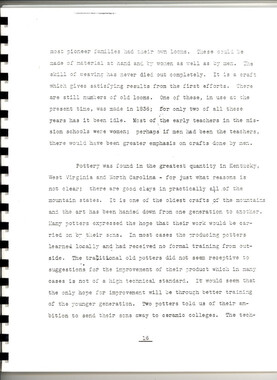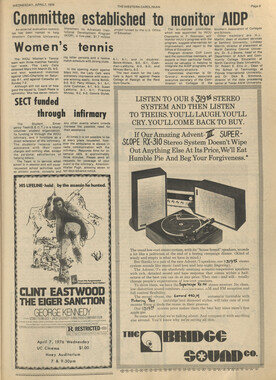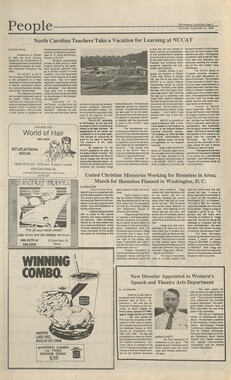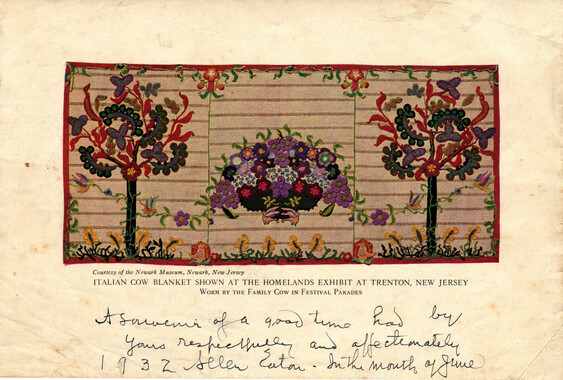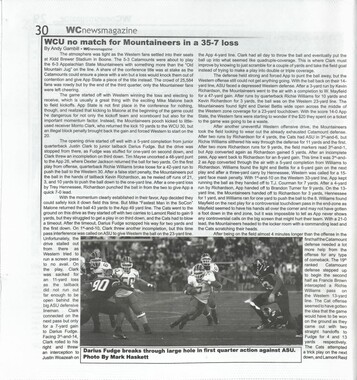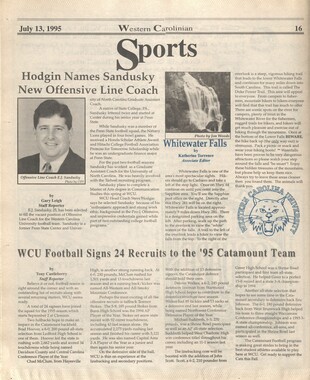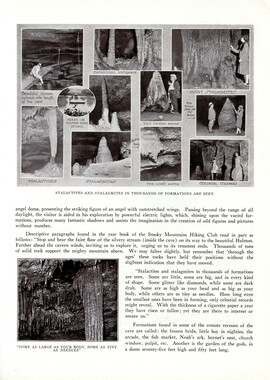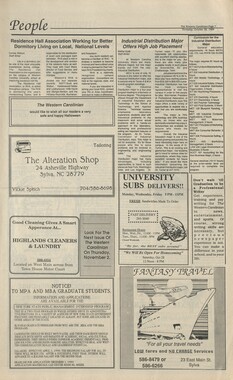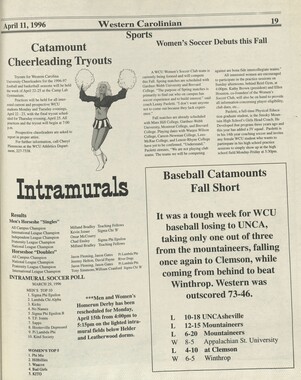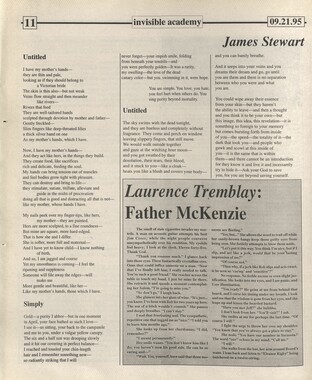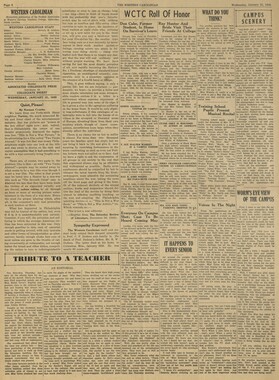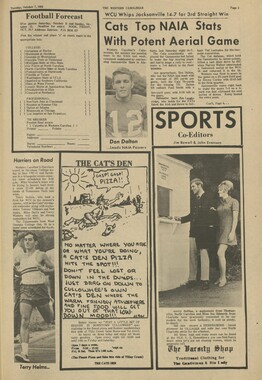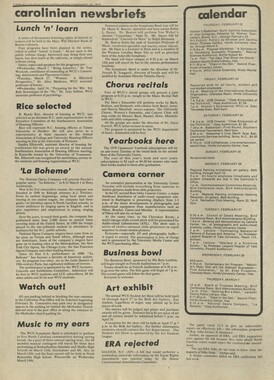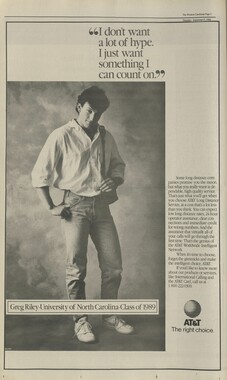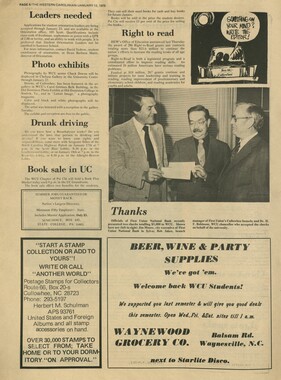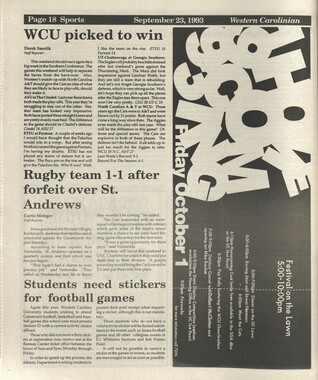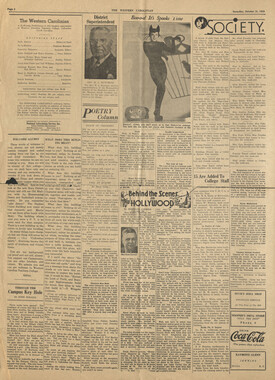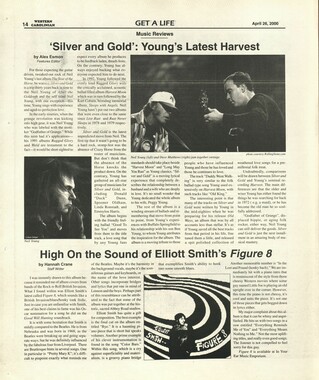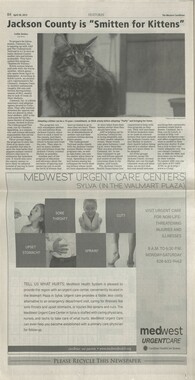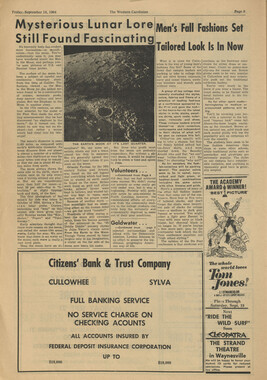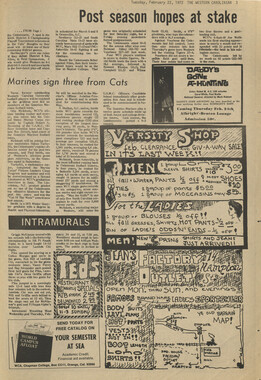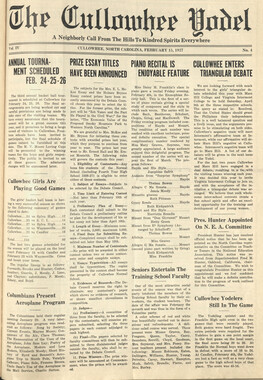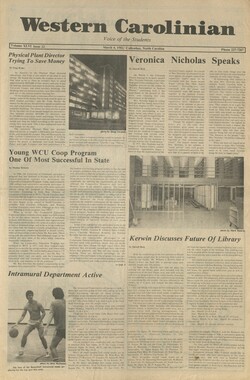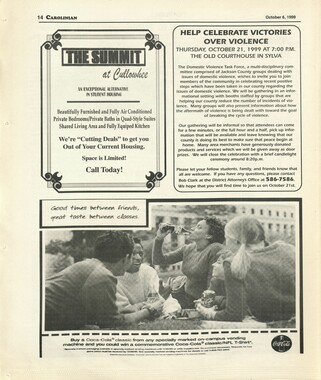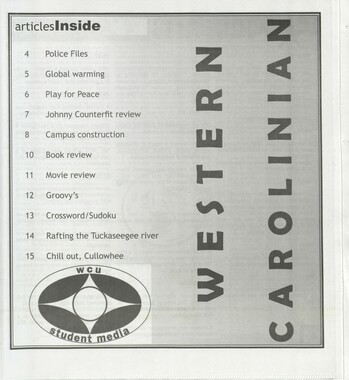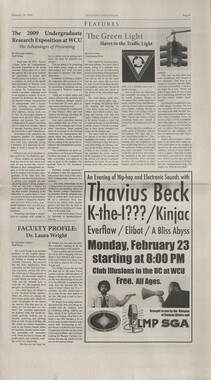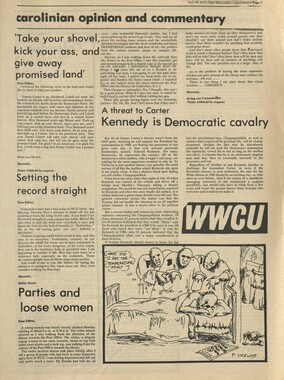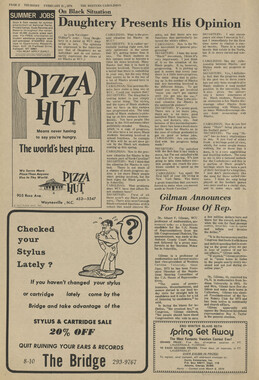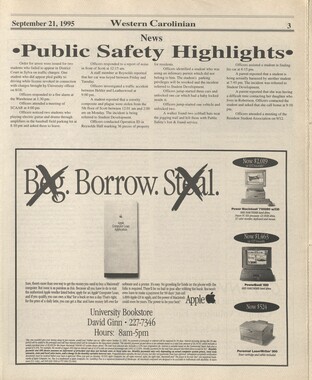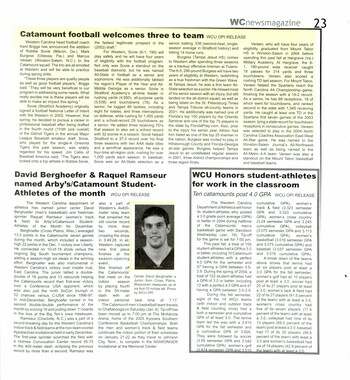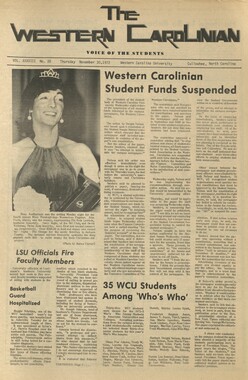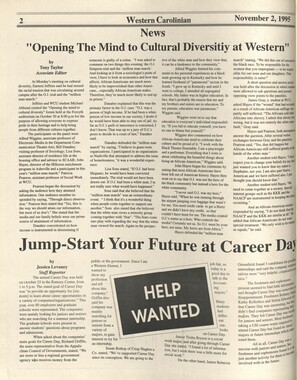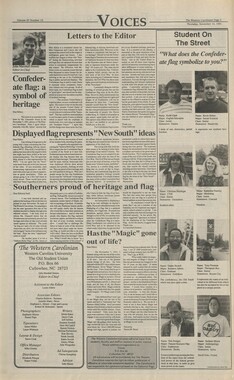Western Carolina University (21)
View all
- Canton Champion Fibre Company (2308)
- Cherokee Traditions (291)
- Civil War in Southern Appalachia (165)
- Craft Revival (1942)
- George Masa Collection (137)
- Great Smoky Mountains - A Park for America (3080)
- Highlights from Western Carolina University (422)
- Horace Kephart (973)
- Journeys Through Jackson (159)
- LGBTQIA+ Archive of Jackson County (89)
- Oral Histories of Western North Carolina (318)
- Picturing Appalachia (6617)
- Stories of Mountain Folk (413)
- Travel Western North Carolina (153)
- Western Carolina University Fine Art Museum Vitreograph Collection (129)
- Western Carolina University Herbarium (92)
- Western Carolina University: Making Memories (738)
- Western Carolina University Publications (2491)
- Western Carolina University Restricted Electronic Theses and Dissertations (146)
- Western North Carolina Regional Maps (71)
- World War II in Southern Appalachia (131)
University of North Carolina Asheville (6)
View all
- Allanstand Cottage Industries (62)
- Appalachian National Park Association (53)
- Bennett, Kelly, 1890-1974 (1463)
- Berry, Walter (76)
- Brasstown Carvers (40)
- Carver, George Washington, 1864?-1943 (26)
- Cathey, Joseph, 1803-1874 (1)
- Champion Fibre Company (233)
- Champion Paper and Fibre Company (297)
- Cherokee Indian Fair Association (16)
- Cherokee Language Program (22)
- Crowe, Amanda (40)
- Edmonston, Thomas Benton, 1842-1907 (7)
- Ensley, A. L. (Abraham Lincoln), 1865-1948 (275)
- Fromer, Irving Rhodes, 1913-1994 (70)
- George Butz (BFS 1907) (46)
- Goodrich, Frances Louisa (120)
- Grant, George Alexander, 1891-1964 (96)
- Heard, Marian Gladys (60)
- Kephart, Calvin, 1883-1969 (15)
- Kephart, Horace, 1862-1931 (313)
- Kephart, Laura, 1862-1954 (67)
- Laney, Gideon Thomas, 1889-1976 (439)
- Masa, George, 1881-1933 (61)
- McElhinney, William Julian, 1896-1953 (44)
- Niggli, Josephina, 1910-1983 (10)
- North Carolina Park Commission (105)
- Osborne, Kezia Stradley (9)
- Owens, Samuel Robert, 1918-1995 (11)
- Penland Weavers and Potters (36)
- Roberts, Vivienne (15)
- Roth, Albert, 1890-1974 (142)
- Schenck, Carl Alwin, 1868-1955 (1)
- Sherrill's Photography Studio (2565)
- Southern Highland Handicraft Guild (127)
- Southern Highlanders, Inc. (71)
- Stalcup, Jesse Bryson (46)
- Stearns, I. K. (213)
- Thompson, James Edward, 1880-1976 (226)
- United States. Indian Arts and Crafts Board (130)
- USFS (683)
- Vance, Zebulon Baird, 1830-1894 (1)
- Weaver, Zebulon, 1872-1948 (58)
- Western Carolina College (230)
- Western Carolina Teachers College (282)
- Western Carolina University (2008)
- Western Carolina University. Mountain Heritage Center (18)
- Whitman, Walt, 1819-1892 (10)
- Wilburn, Hiram Coleman, 1880-1967 (73)
- Williams, Isadora (3)
- Cain, Doreyl Ammons (0)
- Crittenden, Lorraine (0)
- Rhodes, Judy (0)
- Smith, Edward Clark (0)
- Appalachian Region, Southern (3032)
- Asheville (N.C.) (1945)
- Avery County (N.C.) (26)
- Blount County (Tenn.) (195)
- Buncombe County (N.C.) (1680)
- Cherokee County (N.C.) (283)
- Clay County (N.C.) (556)
- Graham County (N.C.) (238)
- Great Smoky Mountains National Park (N.C. and Tenn.) (525)
- Haywood County (N.C.) (3573)
- Henderson County (N.C.) (70)
- Jackson County (N.C.) (4925)
- Knox County (Tenn.) (35)
- Knoxville (Tenn.) (13)
- Lake Santeetlah (N.C.) (10)
- Macon County (N.C.) (421)
- Madison County (N.C.) (216)
- McDowell County (N.C.) (39)
- Mitchell County (N.C.) (135)
- Polk County (N.C.) (35)
- Qualla Boundary (982)
- Rutherford County (N.C.) (78)
- Swain County (N.C.) (2185)
- Transylvania County (N.C.) (270)
- Watauga County (N.C.) (12)
- Waynesville (N.C.) (86)
- Yancey County (N.C.) (72)
- Aerial Photographs (3)
- Aerial Views (60)
- Albums (books) (4)
- Articles (1)
- Artifacts (object Genre) (228)
- Bibliographies (1)
- Biography (general Genre) (2)
- Cards (information Artifacts) (38)
- Clippings (information Artifacts) (192)
- Copybooks (instructional Materials) (3)
- Crafts (art Genres) (622)
- Depictions (visual Works) (21)
- Design Drawings (1)
- Digital Moving Image Formats (2)
- Drawings (visual Works) (185)
- Envelopes (101)
- Exhibitions (events) (1)
- Facsimiles (reproductions) (1)
- Fiction (general Genre) (4)
- Financial Records (12)
- Fliers (printed Matter) (67)
- Glass Plate Negatives (381)
- Guidebooks (2)
- Internegatives (10)
- Interviews (823)
- Land Surveys (102)
- Letters (correspondence) (1045)
- Manuscripts (documents) (618)
- Maps (documents) (177)
- Memorandums (25)
- Minutes (administrative Records) (59)
- Negatives (photographs) (6090)
- Newsletters (1290)
- Newspapers (2)
- Notebooks (8)
- Occupation Currency (1)
- Paintings (visual Works) (1)
- Pen And Ink Drawings (1)
- Periodicals (194)
- Personal Narratives (10)
- Photographs (12977)
- Plans (maps) (1)
- Poetry (6)
- Portraits (4568)
- Postcards (329)
- Programs (documents) (181)
- Publications (documents) (2444)
- Questionnaires (65)
- Relief Prints (26)
- Sayings (literary Genre) (1)
- Scrapbooks (282)
- Sheet Music (2)
- Slides (photographs) (402)
- Songs (musical Compositions) (2)
- Sound Recordings (802)
- Specimens (92)
- Speeches (documents) (18)
- Tintypes (photographs) (8)
- Transcripts (329)
- Text Messages (0)
- A.L. Ensley Collection (275)
- Appalachian Industrial School Records (7)
- Appalachian National Park Association Records (336)
- Axley-Meroney Collection (2)
- Bayard Wootten Photograph Collection (20)
- Bethel Rural Community Organization Collection (7)
- Blumer Collection (5)
- C.W. Slagle Collection (20)
- Canton Area Historical Museum (2110)
- Carlos C. Campbell Collection (462)
- Cataloochee History Project (64)
- Cherokee Studies Collection (4)
- Daisy Dame Photograph Album (5)
- Daniel Boone VI Collection (1)
- Doris Ulmann Photograph Collection (112)
- Elizabeth H. Lasley Collection (1)
- Elizabeth Woolworth Szold Fleharty Collection (4)
- Frank Fry Collection (95)
- George Masa Collection (173)
- Gideon Laney Collection (452)
- Hazel Scarborough Collection (2)
- Hiram C. Wilburn Papers (28)
- Historic Photographs Collection (236)
- Horace Kephart Collection (861)
- Humbard Collection (33)
- Hunter and Weaver Families Collection (1)
- I. D. Blumenthal Collection (4)
- Isadora Williams Collection (4)
- Jesse Bryson Stalcup Collection (47)
- Jim Thompson Collection (224)
- John B. Battle Collection (7)
- John C. Campbell Folk School Records (80)
- John Parris Collection (6)
- Judaculla Rock project (2)
- Kelly Bennett Collection (1482)
- Love Family Papers (11)
- Major Wiley Parris Civil War Letters (3)
- Map Collection (12)
- McFee-Misemer Civil War Letters (34)
- Mountain Heritage Center Collection (4)
- Norburn - Robertson - Thomson Families Collection (44)
- Pauline Hood Collection (7)
- Pre-Guild Collection (2)
- Qualla Arts and Crafts Mutual Collection (12)
- R.A. Romanes Collection (681)
- Rosser H. Taylor Collection (1)
- Samuel Robert Owens Collection (94)
- Sara Madison Collection (144)
- Sherrill Studio Photo Collection (2558)
- Smoky Mountains Hiking Club Collection (616)
- Stories of Mountain Folk - Radio Programs (374)
- The Reporter, Western Carolina University (510)
- Venoy and Elizabeth Reed Collection (16)
- WCU Gender and Sexuality Oral History Project (36)
- WCU Mountain Heritage Center Oral Histories (25)
- WCU Oral History Collection - Mountain People, Mountain Lives (71)
- WCU Students Newspapers Collection (1923)
- Western North Carolina Tomorrow Black Oral History Project (69)
- William Williams Stringfield Collection (2)
- Zebulon Weaver Collection (109)
- African Americans (390)
- Appalachian Trail (35)
- Artisans (521)
- Cherokee art (84)
- Cherokee artists -- North Carolina (10)
- Cherokee language (21)
- Cherokee pottery (101)
- Cherokee women (208)
- Church buildings (190)
- Civilian Conservation Corps (U.S.) (111)
- College student newspapers and periodicals (2012)
- Dams (108)
- Dance (1023)
- Education (222)
- Floods (63)
- Folk music (1015)
- Forced removal, 1813-1903 (2)
- Forest conservation (220)
- Forests and forestry (1198)
- Gender nonconformity (4)
- Great Smoky Mountains National Park (N.C. and Tenn.) (181)
- Hunting (47)
- Landscape photography (25)
- Logging (122)
- Maps (83)
- Mines and mineral resources (9)
- North Carolina -- Maps (18)
- Paper industry (38)
- Postcards (255)
- Pottery (135)
- Railroad trains (72)
- Rural electrification -- North Carolina, Western (3)
- School integration -- Southern States (2)
- Segregation -- North Carolina, Western (5)
- Slavery (5)
- Sports (452)
- Storytelling (243)
- Waterfalls -- Great Smoky Mountains (N.C. and Tenn.) (66)
- Weaving -- Appalachian Region, Southern (280)
- Wood-carving -- Appalachian Region, Southern (328)
- World War, 1939-1945 (173)
Western Carolinian Volume 32 Number 16
Item
Item’s are ‘child’ level descriptions to ‘parent’ objects, (e.g. one page of a whole book).
-
-
CAROLINIAN EDITORIALS THE REPUBLICAN IN OUR LIFE The Republican sweep of the national and state elections Tuesday means one thing—that the GOP has regained the ground it lost during the Johnson landslide of 1964. Republican victories in the South, however, are much more significant, particularly in Western North Carolina. Interviews yesterday confirmed our supposition that certain of our administration have qualms about the election of Republican Charles Taylor as district representative. The feeling seems to be that the College cannot be as effectively represented by a Republican as by a Democrat On the other hand, an exclusive interview with Taylor himself provided answers that should quiet these fears to a great extent We feel personally that Taylor will do his best for Western Carolina College. The extent to which personalities may become involved is a matter of their own choosing. Changing World (The following is the second and last portion of the editorial started in Tuesday's issue of the CAROLINIAN. Concerning the current popularity of LSD, marijuana, and "pills" on the American campus, It is by Bob Ewegen, editor of the COLORADO DAILY.) ' Prtjihfbltion failed against alcohol, which is incredibly easier lo find. A quart of John Barleycorn can stone two men. A quart it "acid" can stone a major city. Even marijuana, far weaker than LSD and probably less harmful than alcohol, is simple to control compared to LSD. ' So the children of Leary can confidently expect to have at least the back door of their paradise ajar if they wish to enter. The question is then, will they enter, in what numbers, and what will happen to society as a result. Hie most dangerous thing about LSD is that the intense personal expansion and discovery it produces seem to dull interest fn the outside world. The children of Kennedy, anxious to remake a nation, carefully planned their tactics, chose their issue* *Bd to a degree played the game of retlpolitik with its inevitable overtones of public relations and subtle compromise. The chi1dren of Leary merely state their own summum bonum to the world, scorn anyone who reains "straight" and regard the necessary alliances and compromises of politics as "selling out." Above all, the children of Kennedy sought to communicate. The children of Leary wish only to proclaim their own reality and care little if they are understood by those who have never shared their religious experience. The children of Kennedy hawe not yet departed. But if this is indeed a transitional stage they may walk beside the children of I-eary for some time to come. Yet inevitably their paths must someday diverge. An inner Camelot does not wipe out a Watts. A week-end "trip" does not erase poverty. The road to a private paradise and a public New Frontier cannot always coincide. The motto of the children of Kennedy was "Ask not what your country can do for you, ask what you can do for your , country." The slogan of the children of Leary is simply "Ask only what you can do for your senses." The two standards are in deep conflict, and both are 'beamed at the college generation. The one accepted by this •generation may well set the lone of American life for decades to come." So tAtny lH THB LATtST £LEZTtttiS, T'tA £0W6f»£Rjtf$ $Rou?/t/§ A TRUjJk . \University Now?WmW^mM^Mm^mmMmm^ The University Art Department (NOTE--The Art Student's League, an unofficial organization formed by students and faculty, is only one manifestation of the current temper in our campus concerning the possibilities that are before us. Otner signals in this direction are becoming increasingly evident as certain departments are moving ahead for their owr;improvement..The following is the expression of this movement in one area of the college. It is a position held by students; though here voiced by a member of the faculty, to whom students must justly look for guidance and leadership.—-E.K.H.) On the evening of Nov. 1, a group of art students andfaculty met to form an ADHOL' organization called (hopefully) after the Art Students' League, the venerable New York art school. The primary purpose of the ASL here is to suggest changes in curricula and organization in the art department, in order to make its educational offering broader, deeper, and more mature. It appears to me that most THE WESTERN CAROLINIAN is published semi-weekly by the students of Western Carolina College, Cullowhee, N. C. Represented for national advertising by National Educational Advertising Service, Inc. A member of the Intercollegiate Press Association and the Carolina Press Association. Offices are located on the second noor of Joyner Building. Phone 293-2312. Subscription rate: $2.00 per year. EDITOR JOHN NICHOLAS TAYLOR BUSINESS MANAGER R. DAVID HAYES Managing Editors Don Lucas, John Keeler News Editor E^1 Hartman Sports Editor J?™?,!^"^ Feature Editor TedWiisjant Asst Feature Editor Charlotte Wise Copy Editor Gail Verne Rewrite Editor Jamie Simpsort Secretary Cyndy Edwards Circulation Manager . Charles Vlck Cartoonists Larry Whiteside, David Hirt Columnists John Keeler, Dan Dietz, The Paw, Bruce Loftin, James L. Bass, Bill Upchurch, Barry Steagall, Earl Hartman, Don Lucas Writers Janie Barnwell, Lamar Buchanan, Janet Garner, Bobby Hicks, Rose Hooper, Doug Howard,, Sam Hull, Nancy Lucas, Marti Norwood, Billie White, Mary Jane Carpenter, Grady Cooper, Stan Rata, Kaki Howard, Carolyn Allen. Photographers Tom Jones, John Wilson Typists .. Marsha Cox, Brenda Davis, Vicki Dowdy, Ginger Lathan Sponsor ***■• Jean M. English of the suggested changes are in the dly;; :,; >." n.iv j > u ai*'. department eventually a functioning ".in" •'j-5-.ly-level art department. Among other things, the ASL suggested that the art curriculum be beefed up by offering more concentration in all of the following areas: drawing, painting, design, printmaking. and sculpture. The opinion of mos< of the ASL people seemed to be that they do not have an opportunity under present conditions to acquire sufficient hae'.j'iund in any one of these areas Along 'V'.'i '.'lis, it was suggested -'hal craft courses, such as leatherwork and design in native and scrap materials be withdraw;: as requirements for "fine" arts majors (the distinction between "fine arts* and "crafts" is a .difficult one), with the implication that a separate crafts major be planned. Also called for was a considerable expansion of the art program, and a finer breakdown from quarter to quarter of tht Student Bill Of Rights by SCOTT THOMPSON Continuing with the presentation of the Student Bill of Rights, today's article moves into the last of the areas covered in the bill. These touch on the fields of off-campus freedoms for students and procedural standards in disciplinary proceedings, THE ARTICLE: In the field of off-campus freedoms, the Student Bill of Rights states that as citizens, students should enjoy the same freedom of speech, peaceable assembly, and the right of petition that other citizens enjoy. Faculty members and administrative officials should insure that institutional powers are not employed to inhibit such intellectual and personal development as is often promoted by their off-campus activities and their exercise of the rights of citizenship. Activities of students may upon occasion result in violation of law. In such cases, institutional officials should apprise students of their legal rights and may offer other assistance. Institutional authority should never merely duplicate the function of general laws, should never be used merely to duplicate the function of general laws. Only where the institution's interests as an academic community are distinct from those of the general community should the special authority of the institution be asserted. The student who does incidentally violate institutional regulations in the course of his off-campus penalty should be subject to no greater penalty than would normally be imposed upon him if here were on campus. Institutional action should not by solely dominated by community pressure. The next area, and an important one, is that of disciplinary proceedings. Most of the sections included are just for the purpose of having some of the questionable factors of our judicial proceedings put down in black and white. An example, and a Pre-Session recommendation: That during the search of a dormitory room, both the student and the official calling for the search be present The principal misunderstood statement in our Student Handbook is this, "Any student who shows undesirable conduct to the college may be subject to disciplinary action." This s;a- tement should be vested with an addition, that students who exhibit to such magnitude of exhibit to such magnitude poor c induct which reflects a negative impression upon the college place themselves in a position which is subject to some degree of disciplinary action. I would li-se to o.iint out to be freshmen, sophomores and CONTINUED, Page 3 A.T. Sarvis history of. art, so as to allow for less repetition end m ire detailed and .vn"y:'.;al study. This does not exhaust the ASL curriculum proposals, but is a sampling of the more important of them. In other areas, the ASL requested a joint student-faculty studio, in which students and faculty could work together and discuss together, and establish a closer personal commuii- cation. It also suggested lockers and an art supply store for art students, so that they might furnish their own supplies, thus introducing the element o! choice in tie pire'ia?. e >r .•• supplies, and the responsibility for their care (and, incidentally, relieving faculty mem'.in of much odious clerieal work). All of these ASL suggestions ■seem to point toward a mature, university-level art department with a Bachelor of Fine Arts curriculum. I believe they are all excellent, There are two other Items which seem important to me in thinking in terms of our department equalling national standards of excellence. We need eventually to have a plant, faculty, and course offering such that Are can honestly offer the MFA (Mat.tjr of Fine Arts), By this is meant the 60 semester or 90 aunrter hour MF \, *! A as is offered at Minnsota, Indiana, Iowa, arid oi'ner ',lj I >u schools whieh are noted "or 'he': excellent art depar! m lis, Also I feel that, if WCC mv-it finds itself a university, the fine arts department (including crafts) should be in the college of fine arts, while the art education department should be in the college of education. Tll2 r.\T30.1 for this Is that thei'- reqai-rn: ,!r. tv'i i> different. Art Education c »nr s es are not always (or even often) taught by practicing studio artists; their goals gravitate around the need for art teachers vvho can help childrm to express themselves in terms of the visual arts, On the other hand the fine arts department has as its primary end the turning out of artists; and in my view, a person who wishes to be a studio artist should s:udy ivi.i si.iT.o artists, at least for the most on•.■'., if I wer. goi>ig ' > 'iiv'.j surgery, I would certainly hope that my surgeon had studied >vith an active surgeon at one time or another, It is important I believe, to remember r»at, while \ '''ichers college (college of education) may be important part of a university, a university is never part of a teachers college.
Object
Object’s are ‘parent’ level descriptions to ‘children’ items, (e.g. a book with pages).
-
The Western Carolinian is Western Carolina University’s student-run newspaper. The paper was published as the Cullowhee Yodel from 1924 to 1931 before changing its name to The Western Carolinian in 1933.
-
